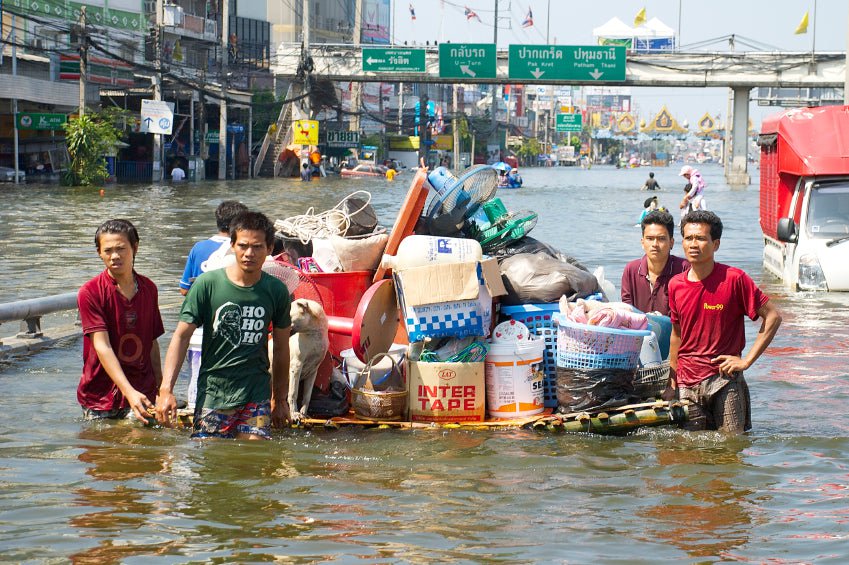Flooding is a natural disaster that can easily fill water that is ordinarily clean and safe with dangerous chemicals and organisms, and necessitate the use of water filters in areas that don't usually need them. If you're in a flood-prone area, such as living on flat ground near a major river like the Mississippi, or if the area where your home is located is struck periodically by hurricanes, it's a good idea to prepare ahead of time for water purification.
No matter how diligent the local sanitation department, all bets are off when a sheet of brown, opaque water spreads over the landscape. Floodwaters flow into factories and wash chemicals out of storage vats, and cause sewage treatment plants and sewer pipes to disgorge their stored filth into the water. With a mix of industrial chemicals and human urine and feces mixed into the slurry of mud and debris they also carry, floodwaters are extremely dangerous to drink.
Of course, the water from a flood also penetrates wells, water reservoirs, and so on in the local area. Even if you aren't directly affected by the flood, your water supply can still end up befouled if it's drawn from anywhere the floodwaters can reach.
Drinking polluted water can make you violently sick, with vomiting and diarrhea making you more likely to dehydrate in the hot weather that often follows a hurricane. If you're trapped on your roof amid a muddy, brown sea of sluggish water, waiting for rescuers for several days, it is extremely useful to have a way to drink clean water rather than quaffing the semi-sewage “neat”.
Anyone who lives in a flood-prone area should store a good water filter and supply of Chlorox or iodine tablets for water purification, as well as a spare canteen and some clean drinking containers that can be kept clear of the floodwaters, too.
Gravity Water Filters or portable filters like pumps or water filter bottles are the most viable means of supplying yourself with clean water after a disaster because they require no running water or electricity to work. With two stainless steel chambers stacked one above the other and upright “candle” filter cartridges. Water is placed in the upper chamber and percolates through the cartridge in order to reach the lower chamber, where it is purified.
While you could use a reverse osmosis filter, you will need a hand pump to force water through the membrane in the absence of water pressure. This represents something with moving parts, which can break and leave you with no way to cleanse water. When choosing water filters for flood emergencies, the simplest approach – a passive gravity feed system – is truly the best.
Through this filtration is enough to remove chemicals and most microbes, it's best to err on the side of caution and throw in an iodine tablet, too. Add a scoop for filling the filter and a spare container or two and you will have the water filter kit you need to weather a flood disaster safely.


Share:
The Bad News about Bottled Water
Water Filtration and Chlorination